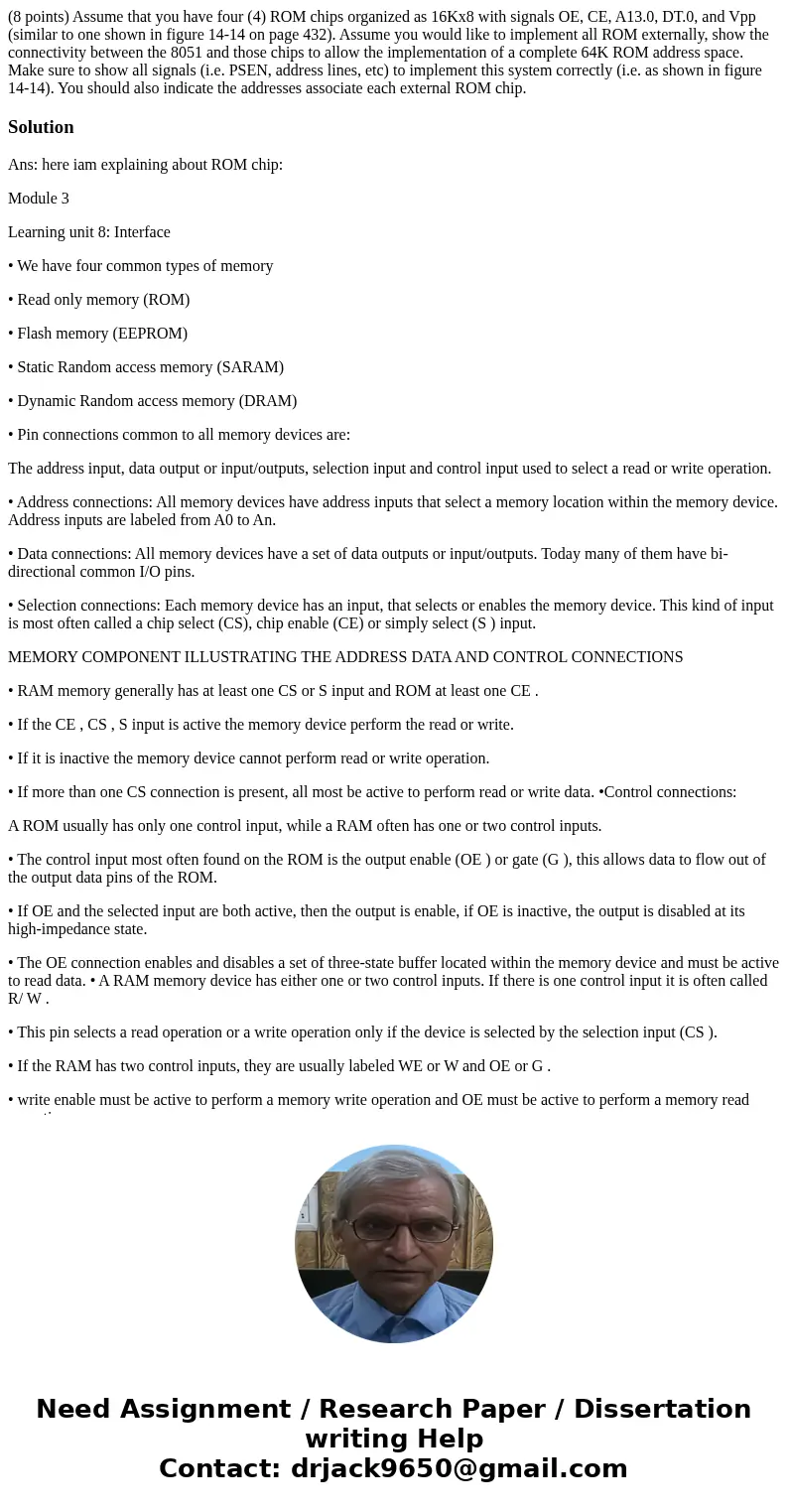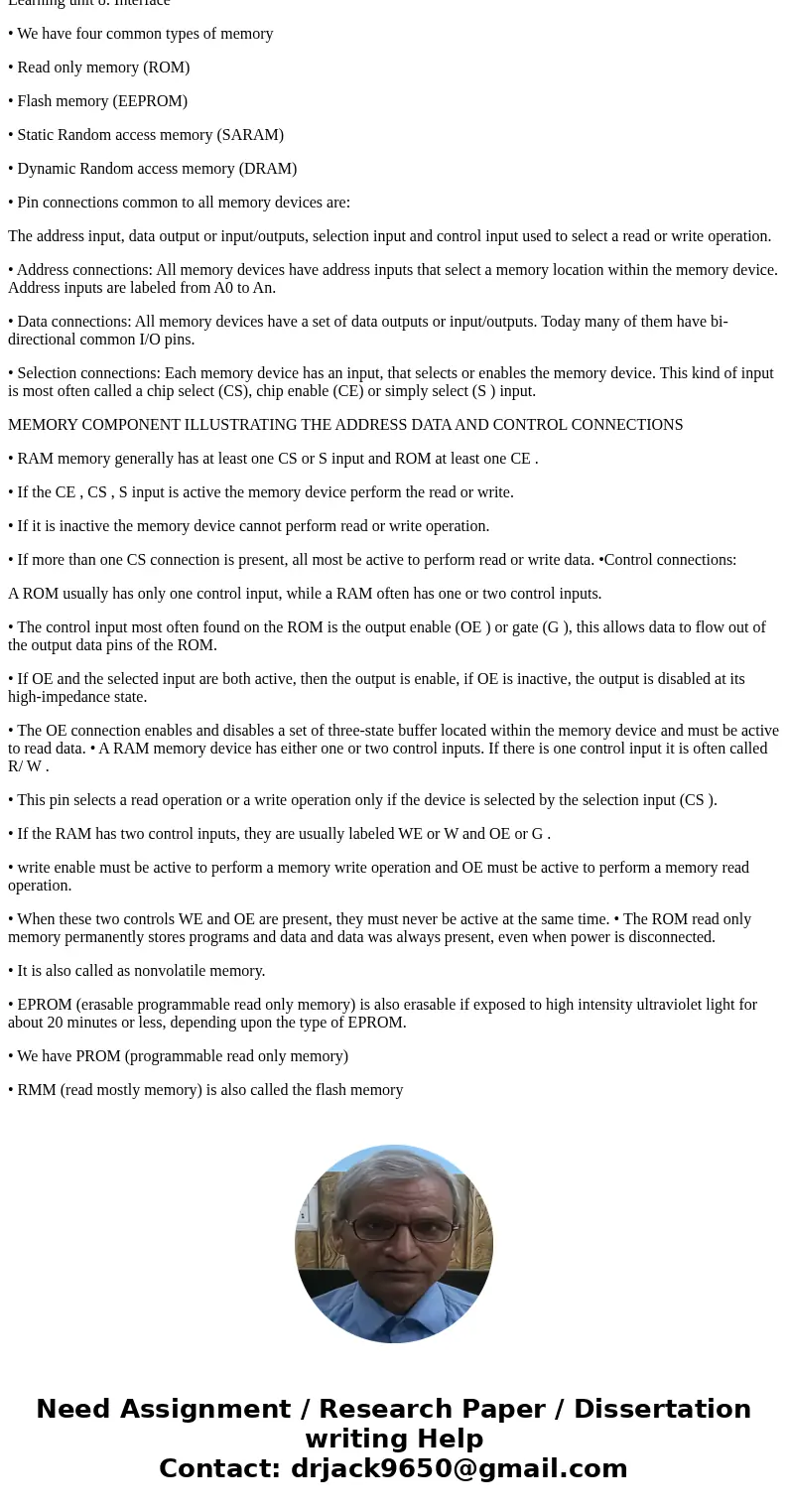8 points Assume that you have four 4 ROM chips organized as
Solution
Ans: here iam explaining about ROM chip:
Module 3
Learning unit 8: Interface
• We have four common types of memory
• Read only memory (ROM)
• Flash memory (EEPROM)
• Static Random access memory (SARAM)
• Dynamic Random access memory (DRAM)
• Pin connections common to all memory devices are:
The address input, data output or input/outputs, selection input and control input used to select a read or write operation.
• Address connections: All memory devices have address inputs that select a memory location within the memory device. Address inputs are labeled from A0 to An.
• Data connections: All memory devices have a set of data outputs or input/outputs. Today many of them have bi-directional common I/O pins.
• Selection connections: Each memory device has an input, that selects or enables the memory device. This kind of input is most often called a chip select (CS), chip enable (CE) or simply select (S ) input.
MEMORY COMPONENT ILLUSTRATING THE ADDRESS DATA AND CONTROL CONNECTIONS
• RAM memory generally has at least one CS or S input and ROM at least one CE .
• If the CE , CS , S input is active the memory device perform the read or write.
• If it is inactive the memory device cannot perform read or write operation.
• If more than one CS connection is present, all most be active to perform read or write data. •Control connections:
A ROM usually has only one control input, while a RAM often has one or two control inputs.
• The control input most often found on the ROM is the output enable (OE ) or gate (G ), this allows data to flow out of the output data pins of the ROM.
• If OE and the selected input are both active, then the output is enable, if OE is inactive, the output is disabled at its high-impedance state.
• The OE connection enables and disables a set of three-state buffer located within the memory device and must be active to read data. • A RAM memory device has either one or two control inputs. If there is one control input it is often called R/ W .
• This pin selects a read operation or a write operation only if the device is selected by the selection input (CS ).
• If the RAM has two control inputs, they are usually labeled WE or W and OE or G .
• write enable must be active to perform a memory write operation and OE must be active to perform a memory read operation.
• When these two controls WE and OE are present, they must never be active at the same time. • The ROM read only memory permanently stores programs and data and data was always present, even when power is disconnected.
• It is also called as nonvolatile memory.
• EPROM (erasable programmable read only memory) is also erasable if exposed to high intensity ultraviolet light for about 20 minutes or less, depending upon the type of EPROM.
• We have PROM (programmable read only memory)
• RMM (read mostly memory) is also called the flash memory


 Homework Sourse
Homework Sourse